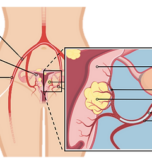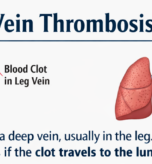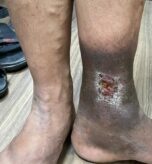Ovarian Vein Embolisation: A Minimally Invasive Solution for Chronic Pelvic Pain

Introduction
Chronic pelvic pain affects millions of women worldwide, often leading to frustration and misdiagnosis. One of the under-recognised causes is Pelvic Congestion Syndrome (PCS), a condition linked to varicose veins in the pelvis. Fortunately, modern medicine offers a safe and effective treatment—Ovarian Vein Embolisation (OVE).
If you have been struggling with pelvic pain, heaviness, or discomfort that worsens after standing, this procedure might be the answer.
What is Pelvic Congestion Syndrome (PCS)?
PCS occurs when the veins in the pelvis become dilated and incompetent, leading to venous reflux and blood pooling. Symptoms often include:
- Chronic pelvic pain (lasting > 6 months)
- Pain that worsens at the end of the day
- Dyspareunia (pain during intercourse)
- Lower back or leg discomfort
- Visible varicose veins in the thighs or vulvar region
For further reading: NIH – Pelvic Congestion Syndrome Research.
Diagnosis of Pelvic Vein Disorders
Accurate diagnosis is crucial before treatment. Common imaging methods include:
- Ultrasound with Doppler (to detect ovarian vein reflux)
- CT/MRI scans (to visualise pelvic varicosities)
- Venography (gold standard) to confirm venous insufficiency
👉Know more about our services https://drvrishitsaraswat.com/our-services/
Ovarian Vein Embolisation (OVE) – The Procedure
Ovarian Vein Embolisation is a minimally invasive, image-guided procedure performed by an Interventional Radiologist.
Steps Involved:
- A small catheter is inserted through a vein (usually in the groin or neck).
- Under fluoroscopy, the ovarian veins are visualised.
- Embolic materials such as coils, sclerosants, or plugs are placed to block refluxing veins.
- Blood flow reroutes to healthier veins, relieving congestion and pain.
For reference: Society of Interventional Radiology – PCS Treatment.
Benefits of OVE
- Day-care procedure (most patients go home the same day)
- Minimally invasive – no major surgery
- High success rates (70–85% symptom relief reported in studies)
- Quick recovery – back to routine in 2–3 days
- Preserves uterus and ovaries (unlike hysterectomy or surgical ligation)
Risks & Complications
Like any medical procedure, OVE has potential risks, though rare:
- Post-embolisation pain
- Coil migration (extremely uncommon)
- Minor bruising at the puncture site
👉 Discuss with Dr. Vrishit Saraswat – Interventional Radiologist
Recovery and Follow-Up
Most women experience pain relief within a few weeks. Follow-up imaging ensures treated veins remain closed. Long-term studies show low recurrence rates and sustained symptom improvement.
For more scientific data: PubMed – Embolisation Outcomes in PCS.
Conclusion
Ovarian Vein Embolisation is a safe, minimally invasive, and highly effective solution for chronic pelvic pain caused by Pelvic Congestion Syndrome. If you’ve been struggling with symptoms, consulting an Interventional Radiologist could change your quality of life.
👉 Ready to take the first step?https://drvrishitsaraswat.com/our-services/
FAQ
Q1– What is embolisation of the pelvic veins?
Embolisation of the pelvic veins is a minimally invasive procedure performed by an interventional radiologist. It involves blocking abnormal or dilated pelvic veins (such as the ovarian or internal iliac veins) using coils, plugs, or sclerosant materials. This stops backwards blood flow (venous reflux) and reduces pelvic congestion, which in turn relieves chronic pelvic pain.
Q2– What is the success rate of ovarian vein embolisation?
The success rate of ovarian vein embolisation is 70–85%, with most women experiencing long-term relief from chronic pelvic pain. Studies have shown significant improvement in quality of life and a low recurrence rate when performed by experienced specialists.
Q3– Is ovarian vein embolisation painful?
The procedure itself is not painful because it is done under local anaesthesia with mild sedation. Some women may feel slight discomfort or pressure during the treatment. Afterwards, mild cramping or pelvic soreness can occur, but it usually subsides within a few days and can be managed with simple pain medication.
Q4– How effective is embolisation?
Embolisation is highly effective for pelvic congestion syndrome. Research shows that more than 3 out of 4 women report significant and sustained pain relief after treatment. It not only reduces pelvic pain but also improves associated symptoms such as heaviness, fatigue, and discomfort during intercourse.
Q5– What is the recovery time for embolisation?
Recovery is usually speedy. Most patients can return home the same day or the following morning. Light activities can be resumed within 24–48 hours, while complete recovery with full pain relief is generally experienced within a few weeks.






